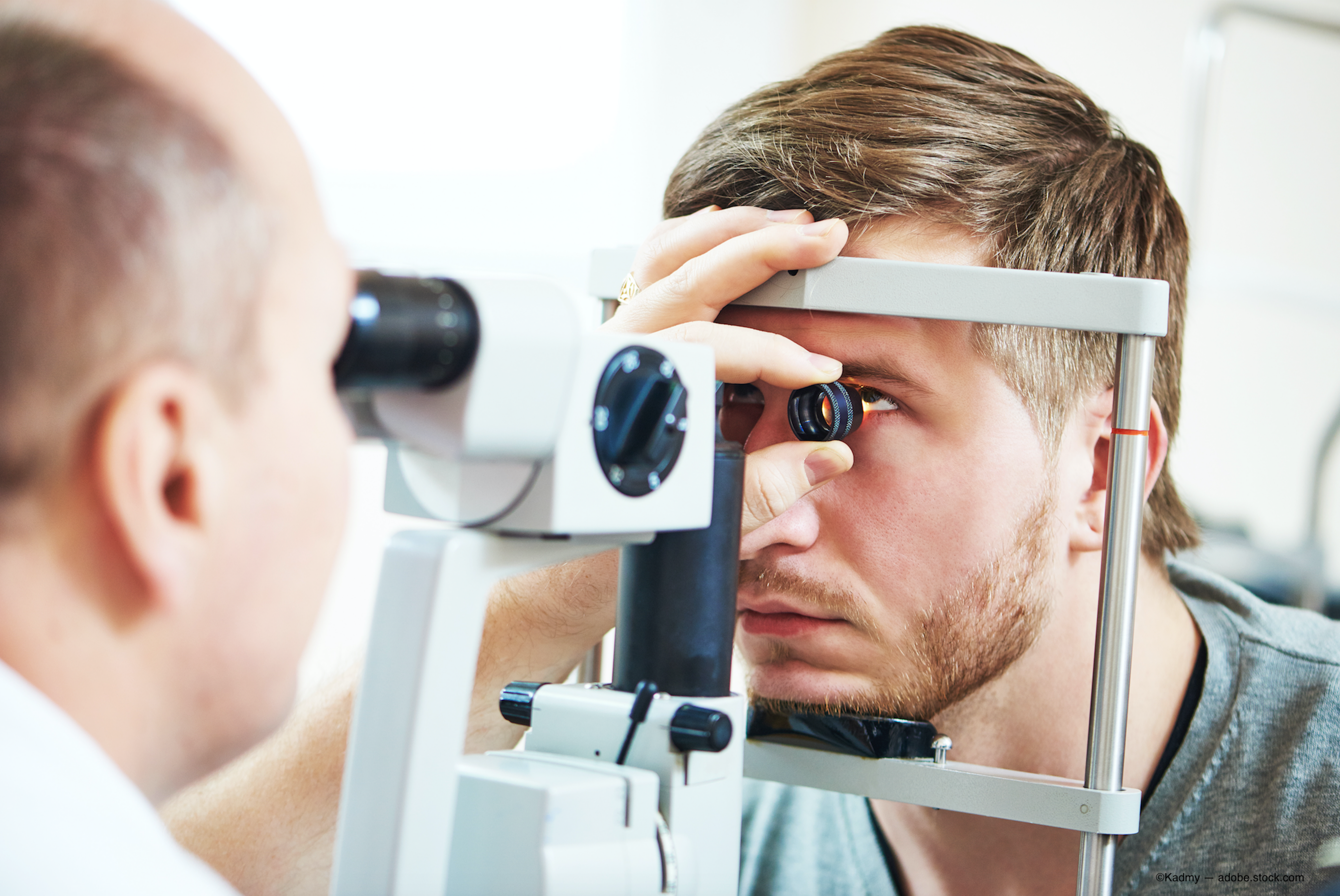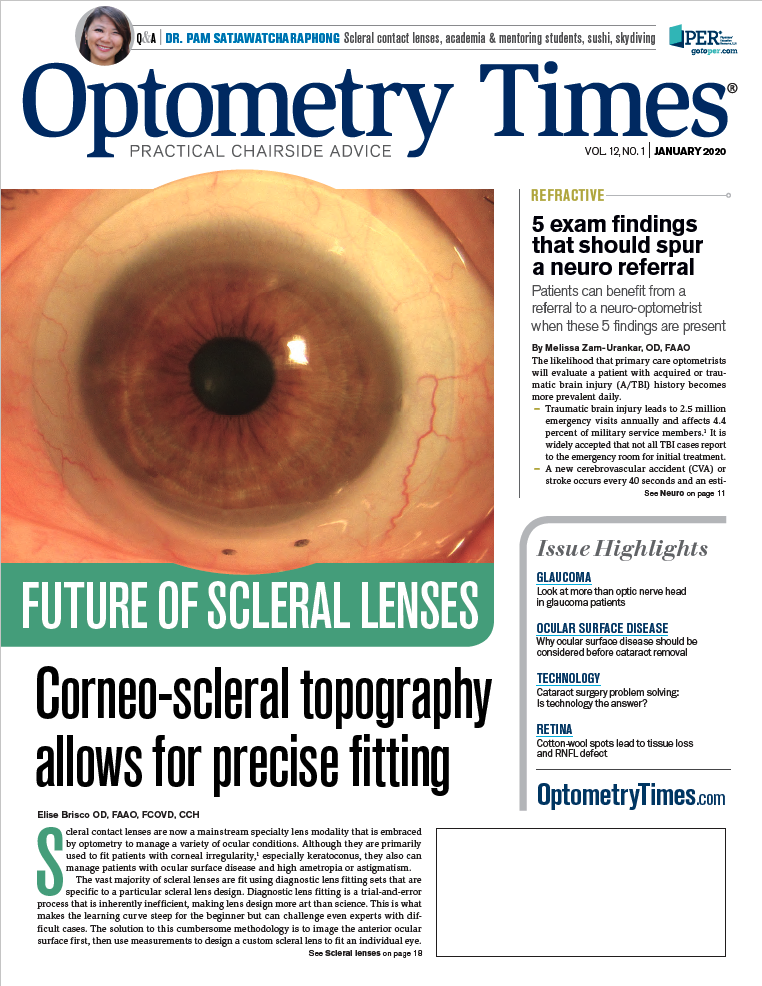New perspective and technologies affect glaucoma treatment
Look beyond intraocular pressure for diagnosis and treatment

Is eye care’s way of thinking about glaucoma outdated?
While each year brings with it the promise of new technology aimed at fighting the disease, perhaps the most promising future outlook comes from a new perspective.
John Berdahl, MD, and Justin Schweitzer, OD, FAAO, both of Sioux Falls, SD, shared this perspective while discussing glaucoma advancements during a presentation at Vision Expo West 2019 in Las Vegas.
A new perspective on glaucoma
The mechanisms behind glaucoma are not well understood.
While glaucoma is often thought to be driven by intraocular pressure (IOP), Dr. Berdahl says it should actually be thought of as a two-pressure disease made up of IOP and intracranial pressure.
It is known that intracranial pressure affects the optic nerve head, but less understood is the role that cerebrospinal fluid (CSF) plays in glaucoma progression. Dr. Berdahl says this variable is key.
“The absolute pressure inside the eyeball doesn’t matter. It’s the pressure relative to the CSF pressure that does,” he says.
Related: Know what common glaucoma mistakes to avoid
The challenge of measuring glaucoma
Obtaining consistent, accurate IOP readings is a key challenge in managing glaucoma.
“The challenge with IOP is there is variability in it,” Dr. Berdahl says.
It is difficult to get consistent IOP measurements. Because of this, ODs run the risk of missing things when basing decisions off of IOP alone, Dr. Berdahl says.
But given that IOP is the only modifiable risk factor for glaucoma, eyecare practitioners should invetigate.
Drs. Schweitzer and Berdahl suggest ODs leverage corneal hysteresis (CH) data to support their decisions.
CH measures the eye’s ability to absorb force, Dr. Berdahl says. Thus, a higher CH indicates better eye resilience and less chance of glaucoma progression.
“I look at this more as a risk profile parameter,” he says. “The data has shown that it is consistently and independently associated with progression, and now, even conversion in glaucoma.”
More By Greg and Marek: Surgical, medical approaches making waves in presbyopia
New technology and medical therapies
Apart from new perspectives on glaucoma, emerging technology for treating the disease is around the corner.
Pharmaceuticals can help manage glaucoma, but patient adherence is a known barrier to long-term maintenance.
“Ninety percent of patients are not adhering to the dosing regimen,” Dr. Schweitzer says.
In response, researchers are looking at new drug delivery methods that do not rely on daily application.
Allergan’s Bimatoprost Ring designed to be placed in the eye and deliver the drug continuously for six months, is one possible course.
“Long term, it looks to be safe and effective so far,” Dr. Schweitzer says.
Other emerging options include travopost-based intraocular implants and punctum plugs. Each option is designed to deliver regular doses without the need for patient intervention.
These medical advancements promise to help patients improve adherence to their programs and help ODs better understand the underlying mechanisms of the disease.
“If we can get to a spot where we know what our target pressure is, and if we can get to a spot where we have therapy that doesn’t have meaningful side effects, and we can just dial that pressure in, we can treat glaucoma,” Dr. Berdahl says.
Related: ODs: Redefine your role in glaucoma collaborative care
Updating testing methodologies
Optical coherence tomography (OCT) and visual field (VF) are primary ways to assess glaucoma, and Dr. Schweitzer says that advancements are coming.
“The whole goal is, diagnosing or identifying patients who are at a higher risk for glaucoma,” he says.
Among the advancements is the growing use of OCT angiography, offering trend analyses that can help ODs track glaucoma progression.
Upgraded versions of VF are coming as well, including Swedish Interactive Threshold Algorithm (SITA) Faster-a test that is 30.4 percent faster than the SITA Fast standard, without any data loss.
“You’re getting the same amount of data as Fast, and it’s faster,” Dr. Schweitzer says.
Dr. Schweitzer also discusses a new type of objective VF testing that measures both eyes simultaneously. This could be particularly helpful for gathering data on patients who don’t tolerate normal visual fields, he says.
Another tool that may soon be available to ODs is the Correcting Applanation Tonometer Surface (CATS). This tool measures IOP through a concave approach that offers more accurate results than Goldmann, Drs. Berdahl and Schweitzer say.
As understanding of glaucoma continues to evolve, these new technologies will be a crucial to improving patient outcomes.
As imaging modalities become more robust, eyecare practitioners will gain a better sense of what glaucoma is, says Dr. Berdahl.
More by Greg and Marek: IPL treats rosacea and meibomian gland dysfunction
